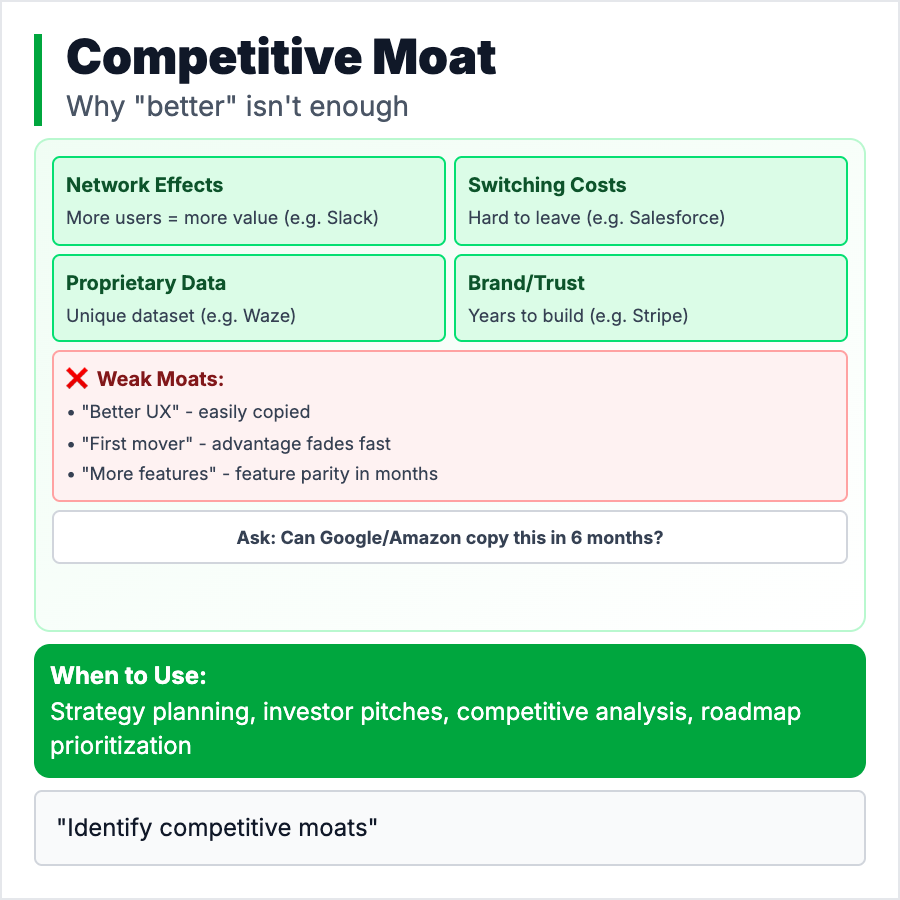
What is Competitive Moat?
A Competitive Moat is what makes your startup hard to copy or compete with—your defensibility. Common moats: Network Effects (more users = more value), Economies of Scale (bigger = cheaper), Brand (trust/status), High Switching Costs (painful to leave), or Proprietary Data/Technology. Early-stage startups often have weak moats—that's okay, but you need a plan to build one.
When Should You Use This?
Think about moats early but don't obsess pre-PMF—first make something people want. As you grow, actively build defensibility: encourage viral growth (network effects), own distribution (brand), make your product sticky (switching costs), or collect unique data. Investors ask "what's your moat?" because startups with moats have higher success rates and exit values.
Common Mistakes to Avoid
- •No moat at all—if your only edge is "we'll execute better," you're vulnerable
- •Claiming "first mover advantage"—that's not a moat, fast followers often win
- •"Better product" as moat—product quality is necessary but easily copied
- •Ignoring network effects—if your product gets better with more users, lean into it
- •Building in stealth—some moats require being public and growing fast
Real-World Examples
- •Figma—Network effects (shared files), proprietary multiplayer technology
- •Stripe—Economies of scale (payment processing), switching costs (integrated deeply)
- •Notion—High switching costs (all your data), network effects (shared workspaces)
- •Linear—Brand (status among devs), product velocity (ships features fast)
Category
Product Management